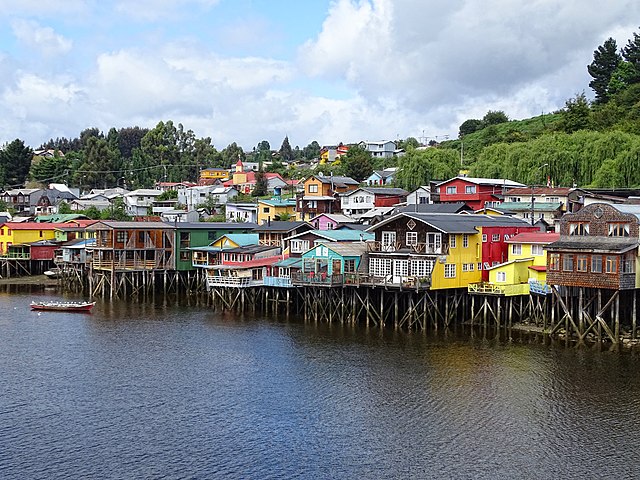Stilt houses are houses raised on stilts over the surface of the soil or a body of water. Stilt houses are built primarily as a protection against flooding; they also keep out vermin. The shady space under the house can be used for work or storage. Stilt houses are commonly found in Southeast Asia, Oceania, Central America, Caribbean, northern parts of South America, Madagascar, Mauritius, Seychelles and the Maldives.
City of Yawnghwe in the Inle Lake, Myanmar
The raised bale houses of the Ifugao people with capped house posts are believed to be derived from the designs of traditional granaries
Reconstruction of Latte period Chamorro buildings raised on capped stone pillars called haligi
Palafitos in Castro, Chiloé Archipelago, Chile
The Austronesian peoples, sometimes referred to as Austronesian-speaking peoples, are a large group of peoples in Taiwan, Maritime Southeast Asia, parts of Mainland Southeast Asia, Micronesia, coastal New Guinea, Island Melanesia, Polynesia, and Madagascar that speak Austronesian languages. They also include indigenous ethnic minorities in Vietnam, Cambodia, Myanmar, Thailand, Hainan, the Comoros, and the Torres Strait Islands. The nations and territories predominantly populated by Austronesian-speaking peoples are sometimes known collectively as Austronesia.
Amis people of Taiwan performing a traditional tribal dance
Skulls representing Johann Friedrich Blumenbach's "five races" in De Generis Humani Varietate Nativa (1795). The Tahitian skull labelled "O-taheitae" represented what he called the "Malay race".
Paraw sailboats from Boracay, Philippines. Outrigger canoes and crab claw sails are hallmarks of the Austronesian maritime culture.
Coconuts on Rangiroa island in the Tuamotus, French Polynesia; a typical island landscape in Austronesia. Coconuts are native to tropical Asia and were spread as canoe plants to the Pacific Islands and Madagascar by Austronesians.








